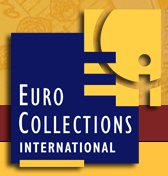
Austria 2009 20€ Electric Railway Silver Proof
The first Austrian electric train was used as a fairground attraction for the 50th birthday celebrations of Emperor Franz Joseph in 1880. Two years later Emperor Joseph authorised the construction of the first public electric railway - carrying passengers on a 5 kilometre day trip from the country town of Mödling into the popular Brühl valley, just outside of Vienna. Originally operating on direct current, it wasn't long before longer railways lines and branches prompted the change to alternating current. In 1911 the electric trains using alternating current were put to use on a 90 kilometre stretch of line to the pilgrimage centre of Mariazell. In 1913 an agreement was made between Norway, Germany, Austria, Switzerland and Sweden for the purposes of unifying an electric railway system, that an alternating current of 15,000 volts be used throughout. Unfortunately, no such agreement was accepted by rail authorities in other countries and as such Europe does not have a unified electric rail transport system.
From the Austrian Mint website:
The First World War interrupted further progress. The new Austrian Republic found the problem of coal supplies for steam engines almost insurmountable and turned to an old imperial study on electrification of the railways. In the 1920’s the alpine lines of the Arlberg railway and the Salzkammergut railway were converted. Electric power improved not only the performance on steep inclines but also freed staff and passengers from unpleasant smoke concentrations, as well as acid rain in tunnels.
New engines were developed. One such was the model 1100 which, because the engine was articulated at both ends with a high cab in the middle and green in colour, was dubbed the “Crocodile”. The articulation allowed this engine type to negotiate tight mountain curves better. The cab in the middle was were the crew and transformer were located.
Electrification went on until 1940 when the Second World War again brought it to a standstill. The conversion of the major lines was completed in the 1950’s. By 1988 only 54% of Austrian lines were electric, but those lines carried 92% of the passenger and freight transport. The era of steam-driven locomotives was at an end.
Featured on the obverse is a detailed depiction of an electric engine known as model 1189 (Nicknamed the "Crocodile"). It is shown coming out from the western exit of the Arlberg tunnel, in the western area of the Austrian Alps. In the upper right is the nominal face value of 20 euros, as well as the country of issue "Republik Oesterreich". At the bottom is the name and nickname of the engine. The reverse design shows engine model 1100 traversing the spectacular Trisanna Bridge on the Arlberg line. In the background can be seen the Wiesburg Castle and mountains. At the bottom is the name of the 231 metre bridge, known at it's time of construction in 1884 as the longest arched steel railway bridge in the world.
Each silver coin is struck from 18 grams of 90% fine silver on a 34mm flan to the highest proof standards of the Austrian Mint. The coin is encapsulated and presented in it's own, official Austrian Mint jewel case, along with a certificate of authenticity confirming the mintage of 50,000 silver coins released worldwide.
Euro Collections International has the Austria 2009 20€ Electric Railway Silver Proof available to order now from the website.





No comments:
Post a Comment